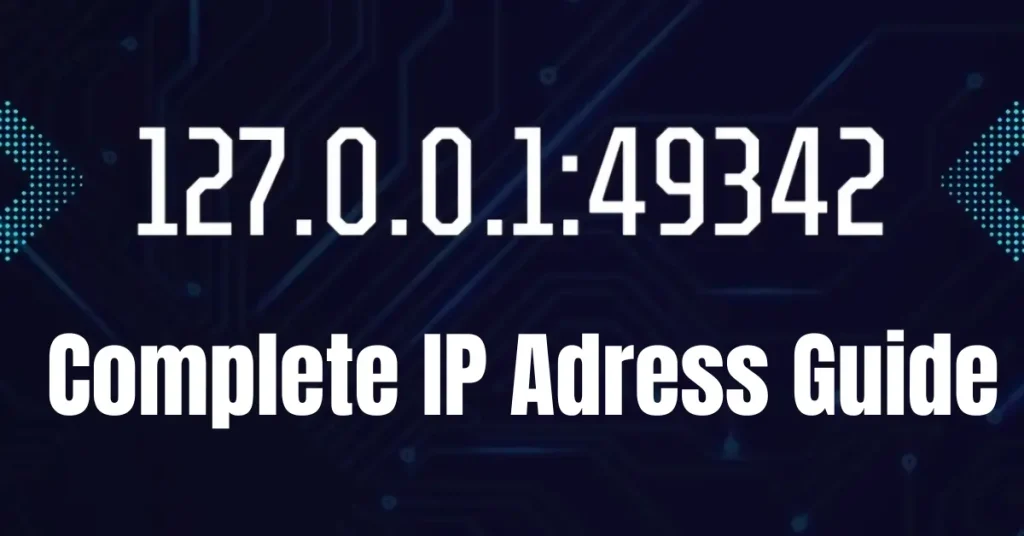Introduction to IP Addresses and Their Relevance in Network Security
In the realm of networking, IP addresses function like street addresses, guiding data from one device to another. Among these, one address frequently referenced for internal communications is 127.0.0.1, often known as “localhost.” When paired with the port number 49342, this combination has critical implications for network security, testing environments, and potential vulnerabilities.
To fully grasp the importance of 127.0.0.1:49342, it’s essential to explore how this specific address operates, the threats it can present, and best practices for safeguarding your network against exploitation.
The Role of 127.0.0.1:49342 in Network Security
The IP address 127.0.0.1, often referred to as the loopback address, is critical in network testing and communication. When combined with the port 49342, it allows a computer to communicate with itself, facilitating secure internal communications without the need for external exposure. While its primary function is for diagnostic and testing purposes, this combination can also be manipulated by cybercriminals if security measures are inadequate.
Understanding how 127.0.0.1:49342 operates can help secure internal processes and mitigate risks associated with misconfigurations or vulnerabilities in software applications.

Key Threats to Network Security and How to Address Them
Network security faces various challenges, including malware, phishing, and unprotected networks. Malware, such as ransomware and viruses, can infect systems through downloads or malicious attachments. Phishing schemes trick users into revealing sensitive data, while insecure Wi-Fi networks make it easier for attackers to intercept communications.
To counter these threats, organizations should implement robust firewalls, use strong passwords with two-factor authentication, and regularly update software to close any security loopholes. Comprehensive training programs for employees are also critical, as educated users are better equipped to identify suspicious activities.
Using 127.0.0.1:49342 for Secure Remote Access and Diagnostics
One of the primary uses of 127.0.0.1:49342 is for secure remote access and troubleshooting. By leveraging this address, users can establish internal communication channels without exposing sensitive data externally. It is frequently used by developers and IT professionals to test applications and resolve system issues without disrupting the broader network.
When configured properly, this address provides a secure tunnel for transmitting data between services on the same machine, allowing for controlled, risk-free testing environments.
Best Practices for Enhancing Network Security with 127.0.0.1:49342
To maximize the security of 127.0.0.1:49342, follow these best practices:
- Limit Access: Restrict access to this address, allowing only trusted users and applications to interact with it.
- Firewall Configuration: Set up specific firewall rules to monitor traffic on port 49342 and detect any unusual activity.
- Secure Protocols: Use encryption protocols like SSH to protect data passing through this loopback address.
- Regular Updates: Keep systems and software up to date to address vulnerabilities that attackers could exploit.
- Auditing and Monitoring: Conduct regular audits and closely monitor network logs for suspicious behavior involving this port.
Real-World Applications of 127.0.0.1:49342
Developers often use 127.0.0.1:49342 for testing new applications in a local environment, ensuring functionality and security before deploying them publicly. Network administrators rely on this address to securely manage systems and monitor internal traffic without exposing sensitive data.
Cybersecurity analysts also examine traffic associated with 127.0.0.1:49342 to identify potential internal threats or anomalies, while ethical hackers may use it in penetration tests to detect weaknesses in applications.
How 127.0.0.1:49342 Can Be Exploited for Malicious Purposes
While 127.0.0.1:49342 is generally a safe address used for local communication, it can be exploited if not properly secured. Attackers may use this port to initiate unauthorized actions on a host machine, bypassing external defenses. Malware could exploit 127.0.0.1 for local command execution, making detection difficult.
Thus, diligent monitoring of local network activity is essential to prevent attackers from leveraging this address to gain control over internal systems.
Protecting Against Potential Threats from 127.0.0.1:49342
To safeguard your network from threats associated with 127.0.0.1:49342, implement the following steps:
- Harden Firewall Settings: Ensure your firewall is configured to block unauthorized access to port 49342 while allowing legitimate traffic.
- Frequent Updates: Regularly update all software and applications to close any security gaps.
- Enforce Strong Authentication: Use multi-factor authentication (MFA) to prevent unauthorized access, even if credentials are compromised.
- Monitor Network Traffic: Continuously monitor logs for unusual behavior on 127.0.0.1:49342, and set up alerts for any suspicious activities.
- Educate Users: Ensure your team understands the importance of local IP addresses and how they can be manipulated.
Real-Life Examples of Exploits Using 127.0.0.1:49342
In some cases, attackers have exploited 127.0.0.1:49342 to redirect traffic or hide malicious activity. For instance, malware has been found utilizing this address to communicate within compromised systems without triggering external security alerts. In other examples, ransomware attacks have used localhost addresses like 127.0.0.1 to establish command-and-control operations undetected.
These real-world incidents highlight the necessity of close monitoring and strict security measures when dealing with local IP addresses.
Conclusion: The Importance of Vigilance in Network Monitoring
Understanding and monitoring network activity—especially on addresses like 127.0.0.1:49342—is essential for maintaining robust cybersecurity. While this loopback address is primarily used for testing and internal communication, it can also be exploited if left unprotected. By staying vigilant, employing best practices, and educating teams about the risks and uses of local ports, organizations can strengthen their defenses against a wide array of cyber threats.
- How Exterior Lighting Impacts Home Appraisals During the Holiday Season
- Delta Flight DL275 Diverted to LAX: Cause, Impact and Safety Details
- How Exterior Lighting Affects a Home’s Curb Appeal During the Shortest Days of the Year
- The Story Behind Fashionisk .com : A New Era in Fashion:
- Zupfadtazak: Meaning, Uses, Benefits, Risks, and Expert Insights Explained






